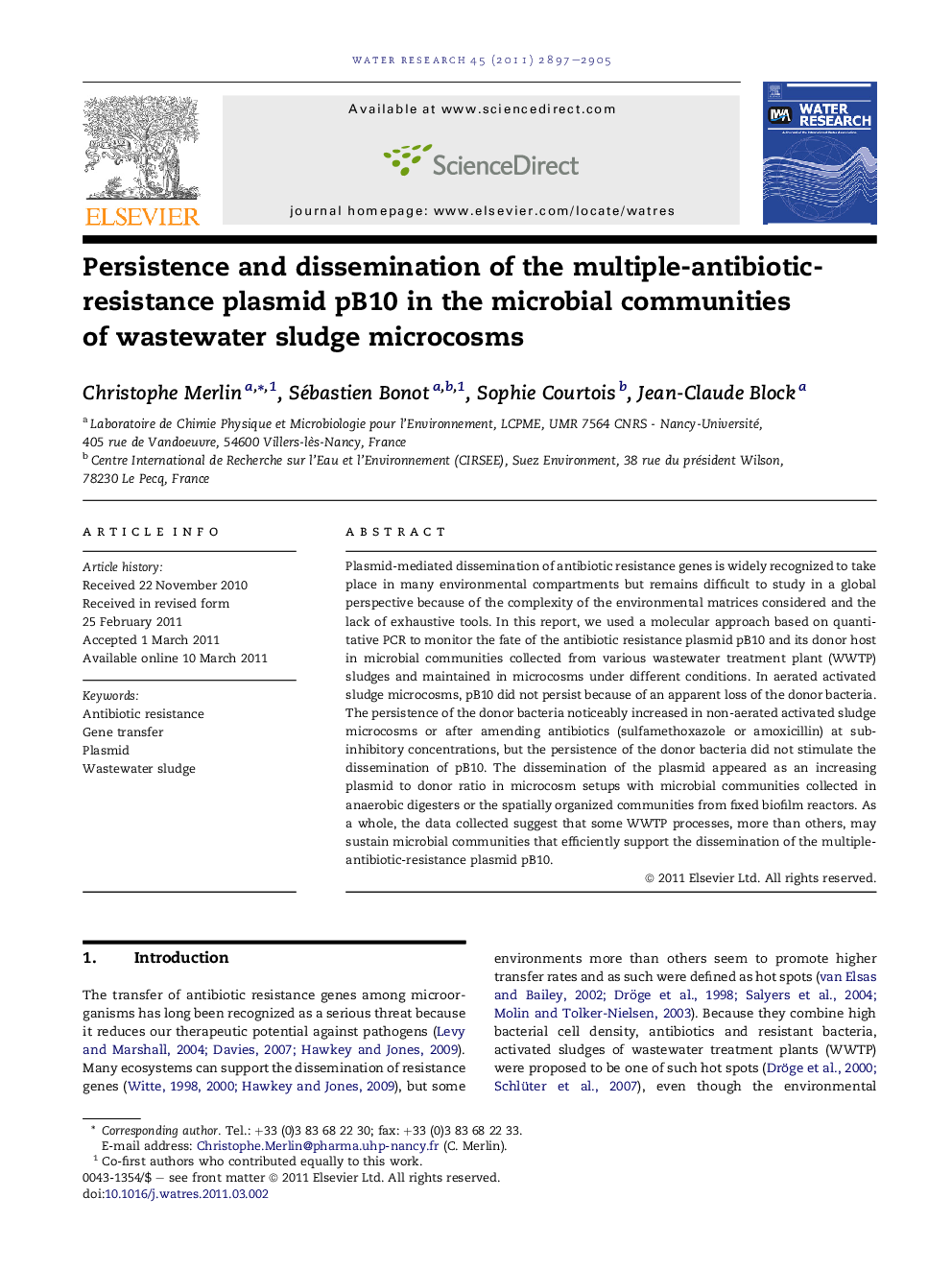| Article ID | Journal | Published Year | Pages | File Type |
|---|---|---|---|---|
| 4483442 | Water Research | 2011 | 9 Pages |
Plasmid-mediated dissemination of antibiotic resistance genes is widely recognized to take place in many environmental compartments but remains difficult to study in a global perspective because of the complexity of the environmental matrices considered and the lack of exhaustive tools. In this report, we used a molecular approach based on quantitative PCR to monitor the fate of the antibiotic resistance plasmid pB10 and its donor host in microbial communities collected from various wastewater treatment plant (WWTP) sludges and maintained in microcosms under different conditions. In aerated activated sludge microcosms, pB10 did not persist because of an apparent loss of the donor bacteria. The persistence of the donor bacteria noticeably increased in non-aerated activated sludge microcosms or after amending antibiotics (sulfamethoxazole or amoxicillin) at sub-inhibitory concentrations, but the persistence of the donor bacteria did not stimulate the dissemination of pB10. The dissemination of the plasmid appeared as an increasing plasmid to donor ratio in microcosm setups with microbial communities collected in anaerobic digesters or the spatially organized communities from fixed biofilm reactors. As a whole, the data collected suggest that some WWTP processes, more than others, may sustain microbial communities that efficiently support the dissemination of the multiple-antibiotic-resistance plasmid pB10.
Graphical abstractThe dissemination of the multiple-antibiotic-resistance-plasmid pB10 from the donor bacteria DH5α towards the communities of wastewater sludge was monitored in microcosms by qPCR. Sludge from biofilm reactors and anaerobic digesters promoted the dissemination of pB10 but the activated sludge did not. Amendments of antibiotics and absence of aeration increased the persistence of the donor bacteria in activated sludge without promoting the transfer of the plasmid.Figure optionsDownload full-size imageDownload high-quality image (164 K)Download as PowerPoint slideHighlights► The dissemination of the antibiotic resistant plasmid pB10 in various wastewater sludge communities was evaluated in microcosms at the molecular level using a quantitative PCR approach. ► Plasmid pB10 appeared to disseminate well in microbial communities from anaerobic sludge digester and fixed biofilm reactor, while no dissemination could be observed in communities from activated sludge. ► Antibiotics amendments at sub-inhibitory concentrations and the lack of aeration improved the stability of the pB10 donor bacterium used to inoculate the microcosms rather than promoting the dissemination of the plasmid itself. ► As a whole, our data indicate that the various processes operating in wastewater treatment plants may contribute differently to the dissemination of pB10-like elements in sludge communities.
